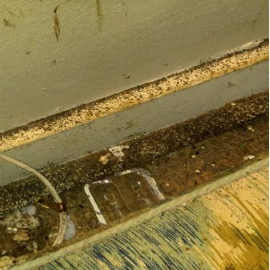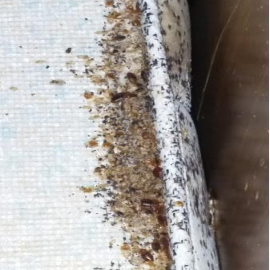Bed bugs are a highly noxious insect. They feed on blood, and can survive months without a meal. They crawl into any opening, including through drains and light fixtures. Throughout the night, they bite people in their beds, causing sleep deprivation and long-term anxiety. Those who have them suffer social stigma, which means shame and isolation.
Looking for Signs of Bed Bugs

A more accurate way to identify a possible infestation is to look for physical signs of bed bugs. When cleaning, changing bedding, or staying away from home, look for:
- Rusty or reddish stains on bed sheets or mattresses caused by bed bugs being crushed.
- Dark spots (about this size:), which are bed bug excrement and may bleed on the fabric like a marker would.
- Eggs and eggshells, which are tiny (about 1mm) and pale yellow skins that nymphs shed as they grow larger.
- Live bed bugs.
Bed Bug Behavior and Habit
Understanding the behavior of bed bugs (how they eat, live, and reproduce) will help you to find an infestation before it becomes established and to monitor for the presence of bed bugs after your home has been treated
Feeding

Appear to prefer to feed on humans, but will feed on other mammals and birds as well.
- Will readily travel 5-20 feet from established hiding places (called harborage) to feed on a host.
- Even though they are primarily active at night, if hungry they will seek hosts in full daylight.
- Feeding can take 3-12 minutes.
- The rusty or tarry spots found on bed sheets or in bug hiding places are because 20% of the time adults and large nymphs will void remains of earlier blood meals while still feeding.
Life stages/mating

Bed bugs need at least one blood meal before the individual bug can develop to the next of the six life stages.
- They can feed more than once.
- Each stage also requires the molting of skin.
- To continue to mate and produce eggs, both males and females must feed at least once every 14 days.
- Each female may lay 1 to 3 eggs per day and 200-500 eggs per her lifetime (6-12 months but could be longer).
- Egg-to-egg life cycle may take four to five weeks under favorable conditions.
